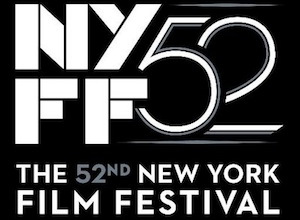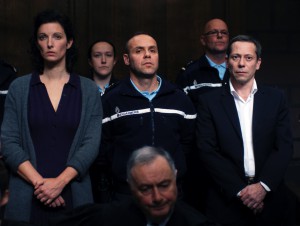New York Film Festival 2014, Part Three: Men
 Recent developments in American television have led to the frequent, often incorrect use of the word anti-hero, and a mistaken impression that the varieties of masculinity of a central character are restricted to the hero/anti-hero polarity. NYFF52 dispenses with that, as is clear from three of the most interesting masculinities on display on the Main Slate: Red Army, a documentary directed by Gabe Polsky; Mike Leigh’s Mr. Turner; and Mathieu Amalric’s The Blue Room.
Recent developments in American television have led to the frequent, often incorrect use of the word anti-hero, and a mistaken impression that the varieties of masculinity of a central character are restricted to the hero/anti-hero polarity. NYFF52 dispenses with that, as is clear from three of the most interesting masculinities on display on the Main Slate: Red Army, a documentary directed by Gabe Polsky; Mike Leigh’s Mr. Turner; and Mathieu Amalric’s The Blue Room.
Red Army, one of the festival surprises, is an exhilarating chronicle of the vicissitudes of the championship Russian team that ruled hockey in the 1980’s. The film examines the period in which the Soviet Union was moving through Perestroika toward collapse, and huge salaries offered by the NHL were enticing Russian ice heroes to move to the United States. It is a lens on international relations between Capitalist and Communist countries, and even more intensely an examination of two philosophies of sport. The lower paid Russians take a team approach to hockey that renders play an art, through which individuals evolve intricate strategies that martial the energies of cooperative endeavor. The mega bucks Americans take a simple, brute every-man-for-himself approach. The comparison highlights a barbarity in the individualistically motivated U. S. players.
Ironically, however, Vyacheslav “Slava” Fetisov, the captain of the Russian team, and central figure in Polsky’s documentary, emerges as the protagonist in the festival films closest to the standard American hero, a “John Wayne” prototype, just warmer and more effusive. Wayne played heroes who were the best at what they did, wouldn’t begin a fight, and if dragged into combat made damn sure to finish the conflict their way. Cut off that bolt of cloth, Slava is a tough individualist who refuses to let the Soviet bureaucracy push him around. Going the Wayne prototype one better, Slava balances his dashing self-confidence and brilliance on the ice with a deep loyalty to his fellow players. So he faced a crisis when the NHL came calling, and the Russian powers-that-be broke numerous promises that he would be released from his commitments to play in America. While his teammates kowtowed to the politicos, Slava quit the team rather than be betrayed one more time. And he got his way. Freedom! America! But not the happy ending he envisioned. Once in the United States, Slava’s dedication to the art of group strategies was tested severely. I will leave it to you to discover his American ordeals for yourself when you see Red Army, which you should not miss, and not just because at the press conference Slava reduced a room full of unsentimental film critics to abject admiration.
The later years of the painter J. M. W. Turner, the protagonist of Mike Leigh’s latest film, is another kettle of fish, but equally tasty and unusual. Played by Timothy Spall, in an Oscar caliber performance, Turner is a waddling, grunting, heavy breathing warthog. His physical aspect defies every expectation Western audiences have of their heroes. Not only is he extremely ugly—Spall underwent a profound transformation through the magic of makeup—but his sexual habits and personal hygiene will disgust many moviegoers. Yet Turner emerges in this plotless, peripatetic rendering of the artist’s travels around the seaside at Margate, and in London as a figure with an appealing passion for life and a fidelity to his inner lights. Cinematographer Dick Pope has done an eye-popping job of using the palate of Turner’s colors and his lighting in rendering the tones and textures of the film. Leigh’s depiction of what Turner was as a man and an artist thrillingly blasts every stereotype of masculinity and aesthetics with which we are acquainted.
Finally there is Julien Gahyde (Mathieu Amalric), the protagonist of The Blue Room, directed by Mathieu Amalric. Based on a Georges Simenon mystery about an ordinary man accused of murdering his wife, The Blue Room, at first seems slight. But at his press conference, Amalric helped me to deal with my sense that there was something I wasn’t getting, when he explored with us what he had in mind. We are so used to cinematic and televisual depictions of the bravado, or cunning, or stupidity of the accused murderer that it takes a while to adjust to Amalric’s stunningly atypical depiction of poor, ordinary Gahyde’s psychological paralysis when he becomes the main suspect and finds it impossible to speak on his own behalf. We are given little to confirm whether or not he is guilty, which abandons us to his silence and throws us into his state of confusion. He cannot conceive of himself as a murderer, and yet he is presented with evidence that he must have done the deed. Ultimately, although the court reaches a clear-cut verdict, there is no certainty in the film about what happened. Amalric has brilliantly captured how tenuous our grasp is on our understanding of what we do, let alone the people we are called upon to judge.
The achievements of Polsky, Leigh, and Amalric appear even more impressive when contrasted with the putatively “different” masculinities in two other festival offerings, Gone Girl (Dir. David Fincher) and Eden (Dir. Mia Hansen-Love) which concern, Nick Dunne (Ben Affleck) and Paul (Felix de Givry), respectively. Nick and Paul are part of a growing group of feckless males who stand at the center of movies that depend on the sensational energies of a tormentor to hold the audience in their seats, without shedding any light on either limp protagonist, or spectacular adversary. Some will find this harsh and overly dismissive, and to them I apologize. But Paul’s inability to grow to maturity in the drugged-out 1990’s French electronic music scene that acts as his antagonist and Nick’s victimization by his wife, Amy (Rosamund Pike), a black widow disguised as a pile of vanilla goo, can’t hold a candle to even one close-up of Julien’s face, or one talking head sequence with Slava, let alone Turner spitting on his canvas as he paints.
This post is part of an ongoing partnership between Antenna: Responses to Media & Culture and the Society for Cinema & Media Studies’ Cinema Journal.






